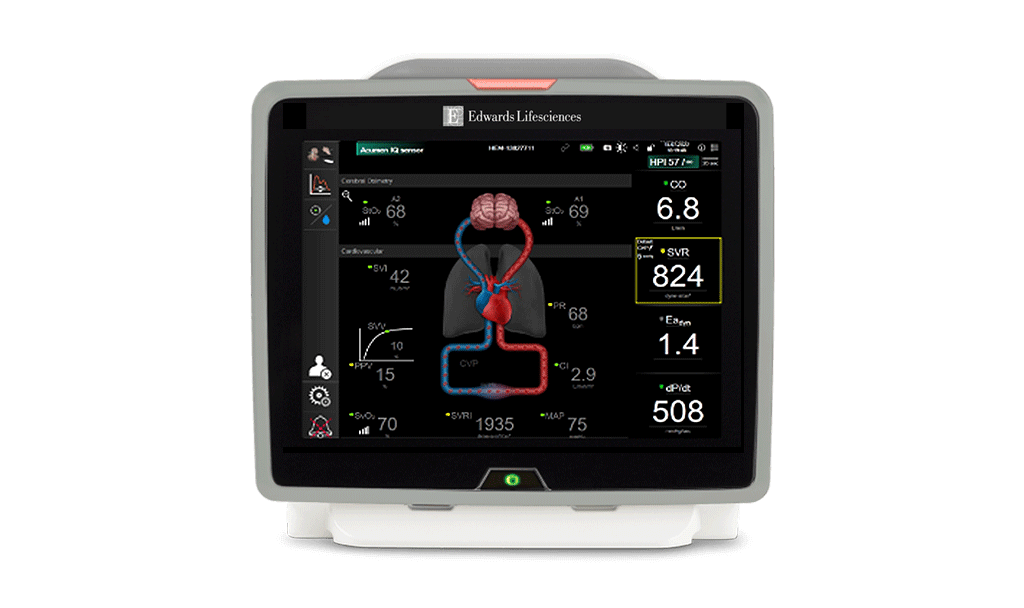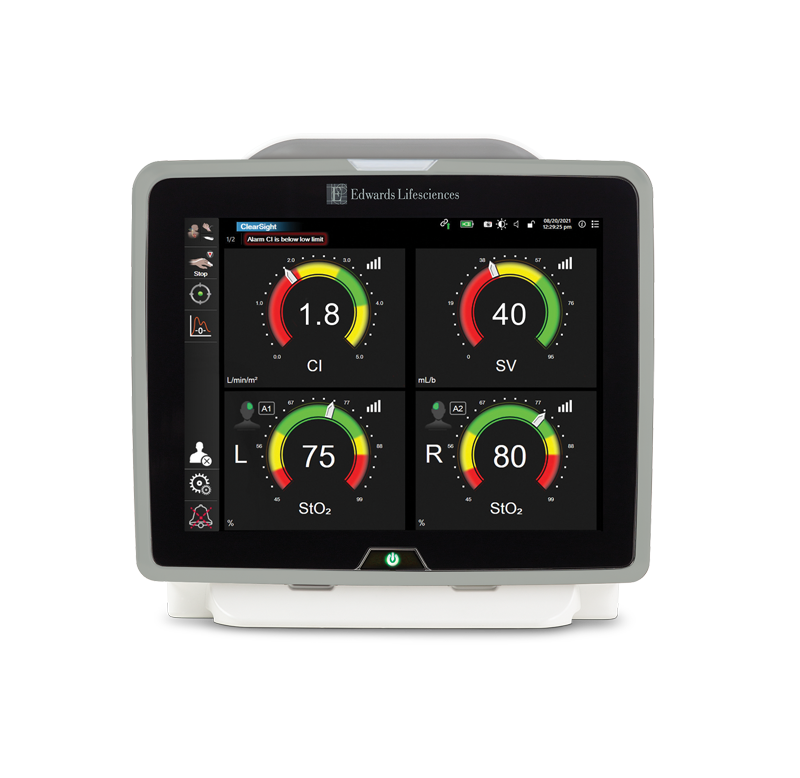
Acumen intelligent decision support suite

Predict hypotension sooner.* Act ahead of time.1,2
The Acumen intelligent decision support suite lets you detect and proactively manage haemodynamic instability, which can lead to hypotension and its associated risks. It also provides retrospective analysis for the management of hypotension.3,4
Acumen HPI software - which is powered by a first-of-its-kind algorithm1 that was developed with machine learning - can predict the onset of hypotension.1,4-6
Acumen HPI software delivers a range of advanced haemodynamic pressure and flow parameters:
- Alerting you when a patient is trending toward hypotension.7
- Allowing you to investigate and understand the root cause,8 and to determine the best course of action.8,9
- Potentially avoiding hypotension and its associated risks.8,9
Acumen HPI software is accessed via a minimally-invasive Acumen IQ sensor or finger cuff that connects to an advanced monitoring platform.4
In a two-center retrospective analysis of patients undergoing major surgery, the Hypotension Prediction Index software demonstrated superior predictive ability than the commonly measured perioperative haemodynamic variables.2
*Predictive performance of HPI is superior to that of CO, SV, MAP, PP, HR, SVV and Shock Index.2
Predictive decision support suite
Acumen Hypotension Prediction Index (HPI) software
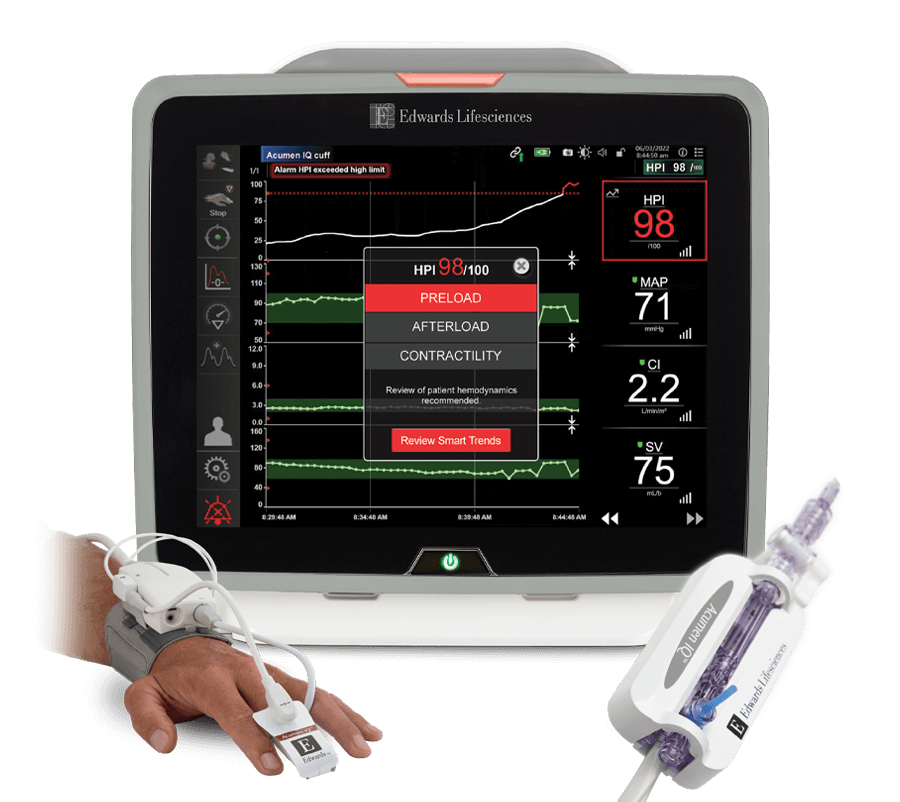
Acumen HPI software – which is powered by a first-of-its-kind algorithm that was developed with machine learning – can predict the onset of hypotension.1, 4-6
Some studies have shown reduced incidence, duration and severity of IOH* during non-cardiac surgery guided by an Acumen HPI software protocol vs. standard of care.8,9
*IOH is defined as MAP <65 mmHg for at least one minute.

Sensors and platform
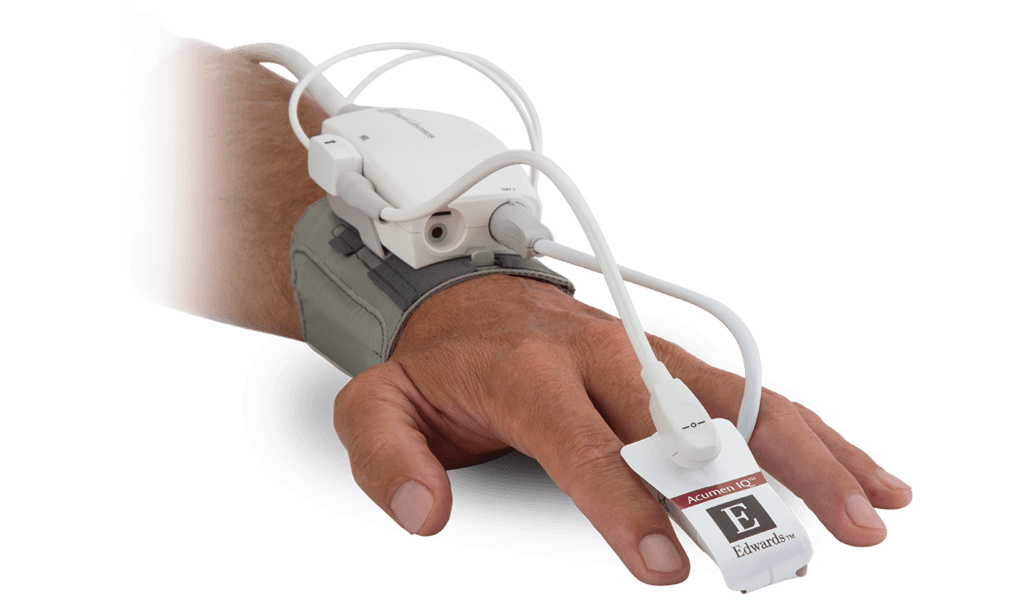
Acumen IQ cuff
Acumen IQ cuff unlocks the Acumen Hypotension Prediction Index (HPI) software, while delivering continuous blood pressure monitoring and advanced haemodynamic parameters noninvasively.
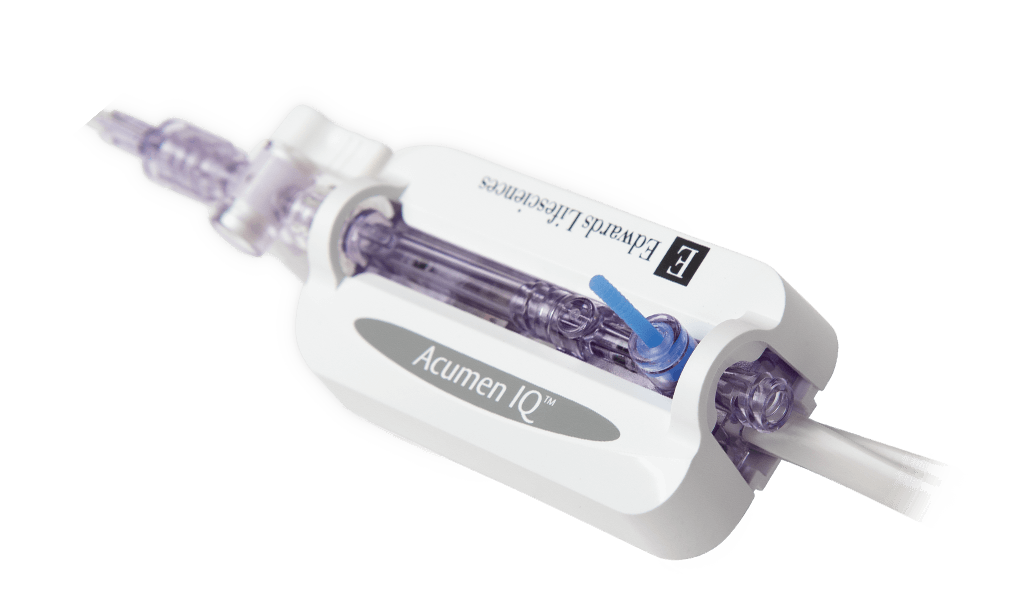
Acumen IQ sensor
Acumen IQ sensor unlocks the Acumen HPI software and automatically updates advanced parameters every 20 seconds, reflecting rapid physiological changes in patients.
Edwards clinical education
Edwards clinical education meets you no matter where you are in the learning process. With a long-term commitment to improving the quality of care for surgical and critical care patients, Edwards’ continuum of educational resources and tools support you as you solve clinical challenges today and in the future.
References
- Hatib F et al, Machine-learning Algorithm to Predict Hypotension Based on High-fidelity Arterial Pressure Waveform Analysis Anesthesiology 2018, Vol.129, 663-674.
- Davies SJ, Vistisen ST, Jian Z, Hatib F, Scheeren TWL. Ability of an Arterial Waveform AnalysisDerived Hypotension Prediction Index to Predict Future Hypotensive Events in Surgical Patients. Anesth Analg. 2020 Feb;130(2):352-359.
- Salmasi, V., Maheshwari, K., Yang, G., Mascha, E.J., Singh, A., Sessler, D.I., & Kurz, A. (2017). Relationship between intraoperative hypotension, defined by either reduction from baseline or absolute thresholds, and acute kidney injury and myocardial injury after noncardiac surgery: A retrospective cohort analysis. Anesthesiology, 126(1), 47-65.
- Ward H. van der Ven, Denise P. Veelo, Marije Wijnberge, Björn J.P. van der Ster, Alexander P.J. Vlaar, Bart F. Geerts, One of the first validations of an artificial intelligence algorithm for clinical use: The impact on intraoperative hypotension prediction and clinical decision-making, Surgery, Volume 169, Issue 6, 2021, Pages 1300- 1303, ISSN 0039-6060, https://doi.org/10.1016/j.surg.202 0.09.041.
- Mathis MR, Kheterpal SK, Najarian K. Artificial intelligence for anesthesia: what the practicing clinician needs to know. Anesthesiology. 2018;129(4):619- 622.
- Feras Hatib, Zhongping Jian, Sai Buddi, Christine Lee, Jos Settels, Karen Sibert, Joseph Rinehart, Maxime Cannesson; Machinelearning Algorithm to Predict Hypotension Based on Highfidelity Arterial Pressure Waveform Analysis. Anesthesiology 2018; 129:663– 674 doi: https://doi.org/10.1097/ALN.000 0000000002300.
- Pinsky MR. Chapter 5: Overview of the circulation. In: Cannesson M, Pearse R, eds. Perioperative hemodynamic monitoring and goal directed therapy: from theory to practice. 2nd ed. Cambridge University Press;2015:29-38.
- Schneck E, Schulte D, Habig L, et al. Hypotension prediction index based protocolized haemodynamic management reduces the incidence and duration of intraoperative hypotension in primary total hip arthroplasty: a single centre feasibility randomised blinded prospective interventional trial. J Clin Monit Comput. 2020;34(6):1149-1158.
- Wijnberge M, Geerts BF, Hol L, et al. Effect of a machine learning–derived early warning system for intraoperative hypotension vs standard care on depth and duration of intraoperative hypotension during elective noncardiac surgery.
Medical device for professional use
For a listing of indications, contraindications, precautions, warnings, and potential adverse events, please refer to the Instructions for Use (consult eifu.edwards.com where applicable).

